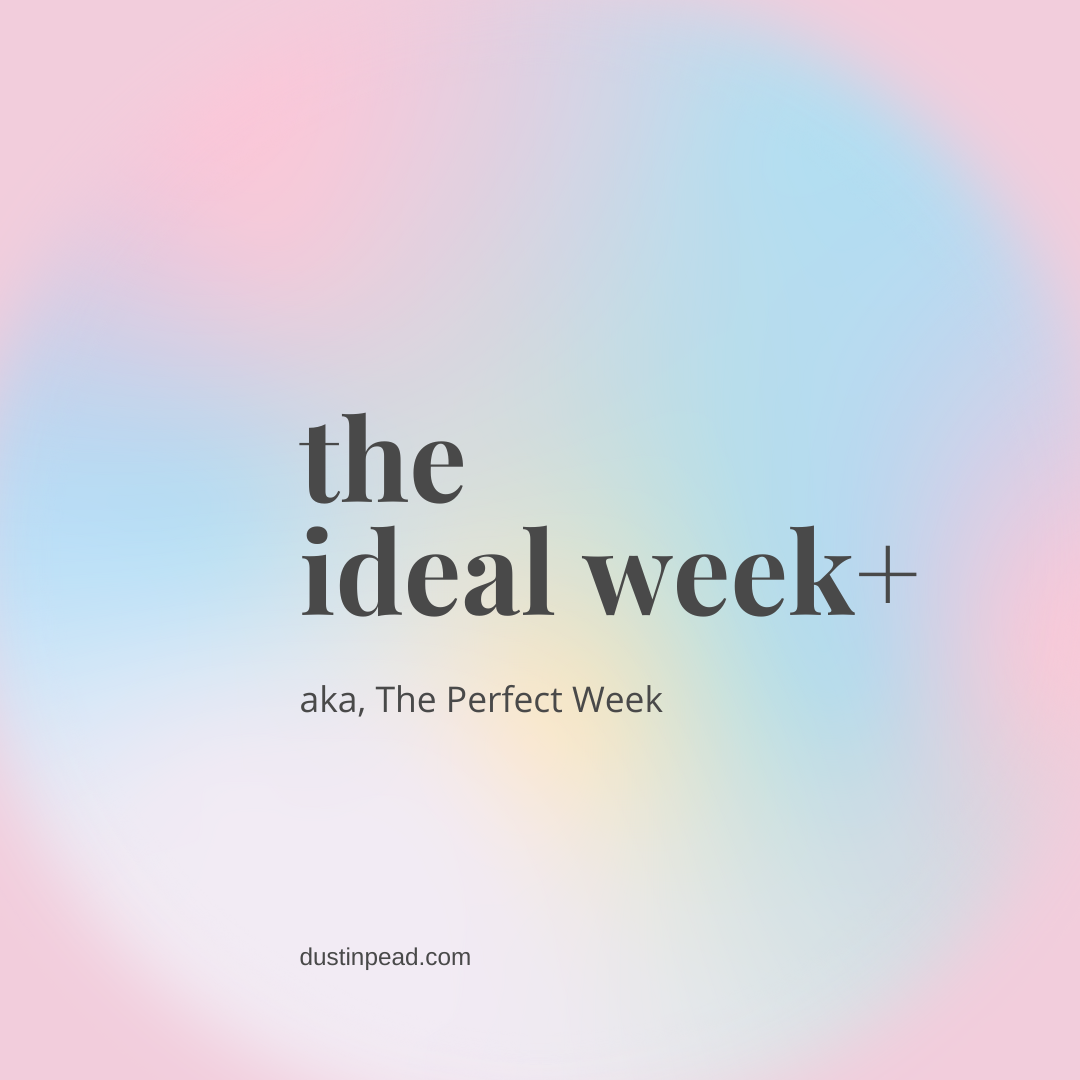The Ideal Week+ (aka The Perfect Week)
The term “ideal week” was popularized by Michael Hyatt and his team at Full Focus. It’s a concept that allows you to structure your week in such a way that you get things done at assigned times so nothing falls through the cracks.
In my coaching and consulting, I like to take it a step further and implement Carey Neuhoff’s lesson from At Your Best about energy zones, and lastly, I add in batch tasks to create what I call, The Ideal Week+, or if you’re so bold, “The Perfect Week”. Now I know “perfection” scares a lot of folks but I trust we are working under the impression that nothing is perfect, but I do believe this framework can get you pretty close.
Start with a list of all responsibilities and/or clients you have and the number of hours you dedicate to these things each day or week.
Now we look at your energy zones. At what time each day are you at your best, the sharpest mentally? For most people, but not all, this tends to be sometime between 7 AM and 11 AM. This is where you want to put the work that requires the most brain power (writing, editing, designing, etc).
Next, we start building your days of the week for maximum efficiency. The key here is to be realistic. This is no time to get lofty. If you know you need a half day each week to write, then add that in. This portion of the exercise may cause you to re-evaluate your priorities but that’s a good thing, don’t shy away from this. Not everything you think that needs to be done each week DOES NEED to be done.
I like to create themed days. For example, Mondays are great admin or meeting days. It takes minimal effort but gets you in the right headspace for the deeper work later in the week. It also entices you to come back the next day and continue plugging away. If you’re Monday each week is loaded down with all sorts of deep work that you can never get done in one day, you are setting yourself up to eventually quit. I also like to leave Fridays as a catch-up day. I try to intentionally block time on Friday to make up for anything I didn’t have enough time for that week.
Include personal rhythms as well. Your morning and evening rhythms should be just as important, if not more, than your professional work day. The way to ensure time for working out, dating your spouse, and closing your laptop is to schedule that time in too.
It’s important to revisit this plan quarterly. In my family, we recognize that with each season or quarter comes changes in expectations and commitments. With that in mind, each quarter I revisit the perfect week to adjust as necessary. Maybe some things aren’t working as well as you thought, or you found out that you need more or less time for a regular project or task type. Keep this document in constant evolution for maximum efficiency.
